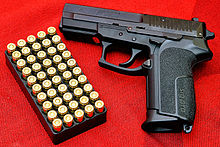 On Friday a madman entered a small-town elementary school and launched an attack on the children, leaving more than 20 casualties behind. But I’m not talking about Connecticut.
On Friday a madman entered a small-town elementary school and launched an attack on the children, leaving more than 20 casualties behind. But I’m not talking about Connecticut.
In a coincidence almost too bizarre to believe, a school attack occurred on the same day in the village of Chengping, in Henan Province, China. News coverage from Newtown is drowning out the atrocity in Chengping, but two key differences jump out. In China, the casualty toll is 23 injured, zero killed, no life-threatening injuries. That’s roughly the inverse of Connecticut, where along with 26 dead there was only one injured survivor.
The second difference is that in China, the madman had a knife, not a gun.
I should emphasize at this point that I have no love or admiration for the Chinese government, and I certainly wouldn’t want to live there. The CBS News article indicates that school attacks are, if anything, even more prevalent in China than here:
The attack marks the latest in a series of violent assaults at elementary schools in China. In 2010, a total of 18 children were killed in four separate attacks. On March 23 of that year, Zheng Minsheng attacked children at an elementary school in Fujian Province, killing eight.
One month later, just a few hours after Zheng Minsheng was executed for his crime, another man, Chen Kanbing wounded 16 students and a teacher in a knife attack at another primary school in Fujian. The following month, on May 12, a man named Wu Huangming killed seven children and two adults with a meat cleaver at a kindergarten in Shaanxi Province. That attack was followed by an August 4 assault by Fang Jiantang, who killed three children and one teacher with a knife at a kindergarten in Shandong Province.
In 2011, a young girl and three adults were killed with an axe at an elementary school in Henan Province by a 30-year-old man named Wang Hongbin, and eight children were hurt in Shanghai after an employee at a child care center attacked them with a box cutter.
So a total of 22 dead in China in six school attacks, beginning in 2010. Horrific as that is, one young man left more dead behind in just a few minutes in Newtown. The weapons in the six incidents in China: knife, knife, meat cleaver, knife, axe, box cutter. It would appear that guns are harder to obtain in China than here. Perhaps that’s a good thing, although it comes bundled with a highly repressive government.
Gun control has never been a primary issue for me, and I have mixed feelings about it. I wrote about the multiple shootings at Fort Hood and in Tucson without explicitly discussing Second Amendment issues, although I expressed admiration for the bystander with a legal concealed weapon who ran toward the gunfire in Tucson, prepared to even the odds. I’m sympathetic to the argument that the presence of a good guy with a gun could help minimize the carnage when a madman opens fire.
Despite the Second Amendment’s reference to “a well-regulated militia,” in 2008 the Supreme Court ruled in Heller that “The Second Amendment protects an individual right to possess a firearm unconnected with service in a militia,” and I think they got it right. We can’t ban guns without overturning the Second Amendment, and there is no prospect of that.
But perhaps we can make guns harder to obtain, without becoming China in the process.
(Public domain photo from Wikipedia)
Leave a Reply